With every webpage loaded, email sent, or video streamed, network traffic takes a complex journey…
In the constantly shifting sands of the IT landscape, keeping pace with the rapid technological advancements and fluctuating economic conditions is a challenge that IT professionals face daily.
The Exoprise Digital Workplace Insight 2023 Survey provides a crucial barometer for these changes, offering a comprehensive view of the industry through the lens of those who navigate its complexities every day. This survey, encompassing the perspectives of 210 IT professionals, serves as a pivotal tool in understanding the current state of IT, its challenges, successes, and potential future directions.
In an era where digital transformation is not just a buzzword but a necessity, the insights gathered from these professionals are more than just data points; they are the collective wisdom of experience. They shed light on how technological trends are shaping business strategies, the impact of economic shifts on IT operations, and the evolving nature of work in the digital age.
Our survey is designed to capture a wide array of experiences, focusing on various aspects of IT operations, from cloud adoption and cybersecurity to remote work dynamics and collaboration tools.
This analysis of the first group of questions from the survey is not just an exploration of current trends, but also a foray into predicting the future landscape of IT. It is an endeavor to understand the pulse of the industry, to identify the pain points and triumphs, and to foresee the challenges and opportunities that lie ahead.
In this comprehensive blog post, we delve into each of these 19 questions, examining the responses in detail. Our goal is to offer insights that are not only reflective of the current state of affairs, but also indicative of where the IT world is heading.
This analysis is for IT leaders, professionals, and enthusiasts who are keen to understand the undercurrents of this dynamic field and to navigate its future with confidence and insight.
Survey Methodology
We engaged with a diverse group of IT professionals to ensure a representative understanding of the industry. The survey included 30 questions, each crafted to explore different facets of the IT landscape, particularly in the context of the latest technological and economic changes.
How do you perceive the cost of Microsoft 365 products?
Understanding perceptions of Microsoft 365’s cost helps gauge its value proposition in the market.
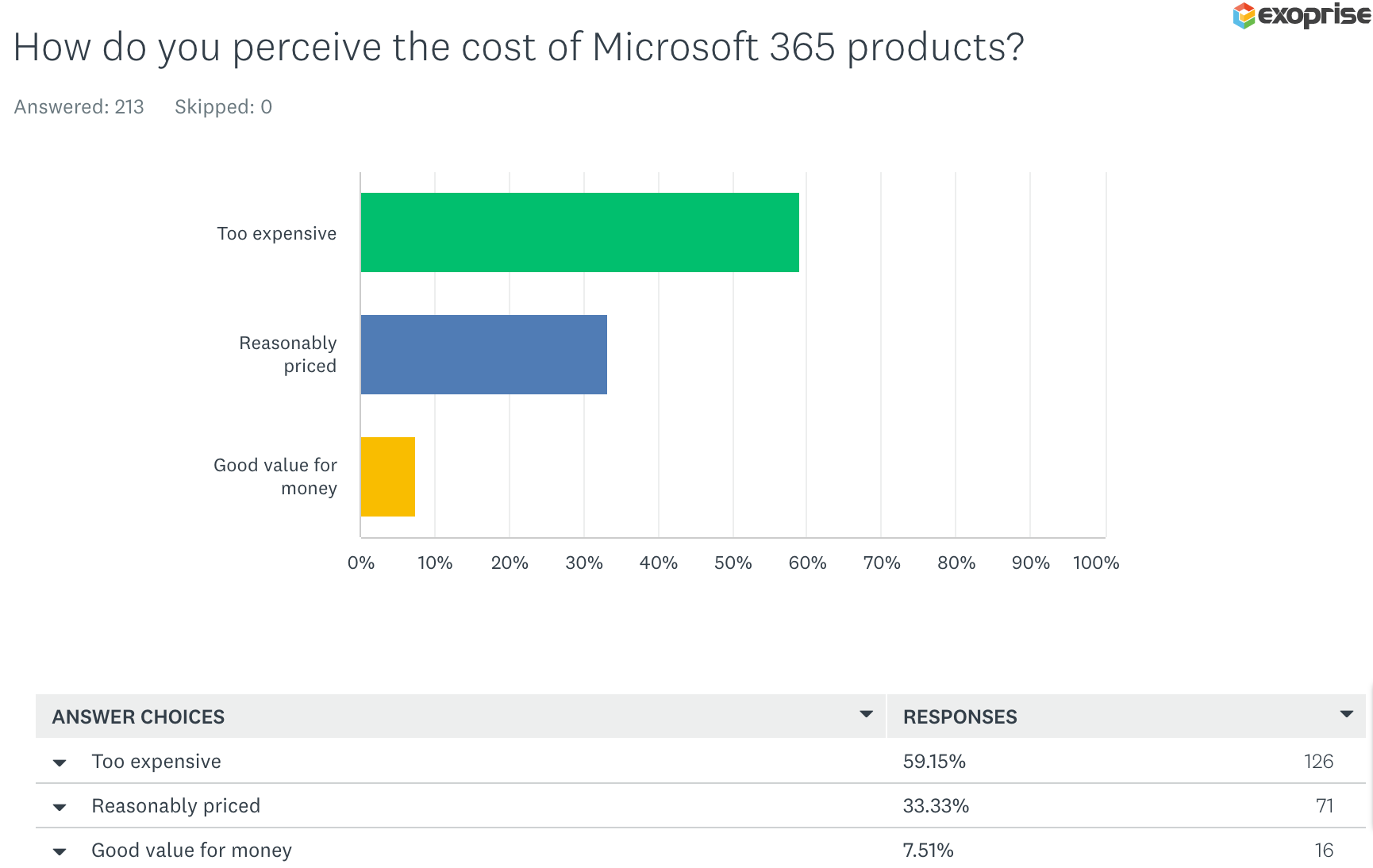
Analysis: With many respondents finding Microsoft 365 ‘Too expensive,’ there’s an indication of a market looking for more cost-effective solutions. This trend could lead to a rise in alternative platforms, prompting Microsoft to reconsider its pricing strategy, potentially leading to a more competitive market.
Comparing the user experiences, which platform do you prefer?
This question is trying to understand user preference between major platforms, reflecting on market dynamics.
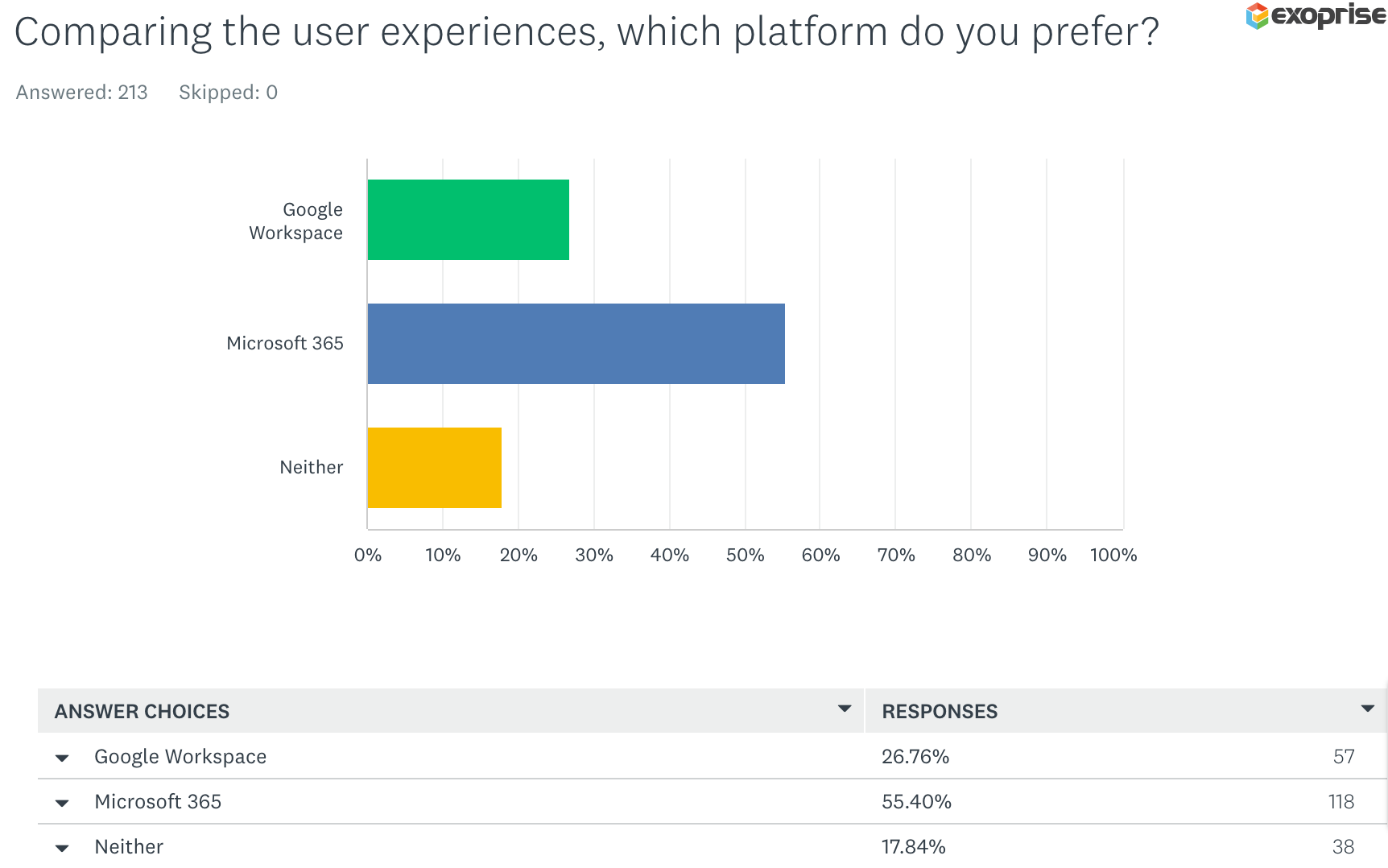
Analysis: The diversity in responses, especially the preference for ‘Neither’ platform, suggests a potential gap in the market. This could drive innovation, leading to new or improved products that better align with user expectations.
Has your usage changed over the last two years for these products?
Examining usage changes can reveal shifts in work patterns and technology adoption.
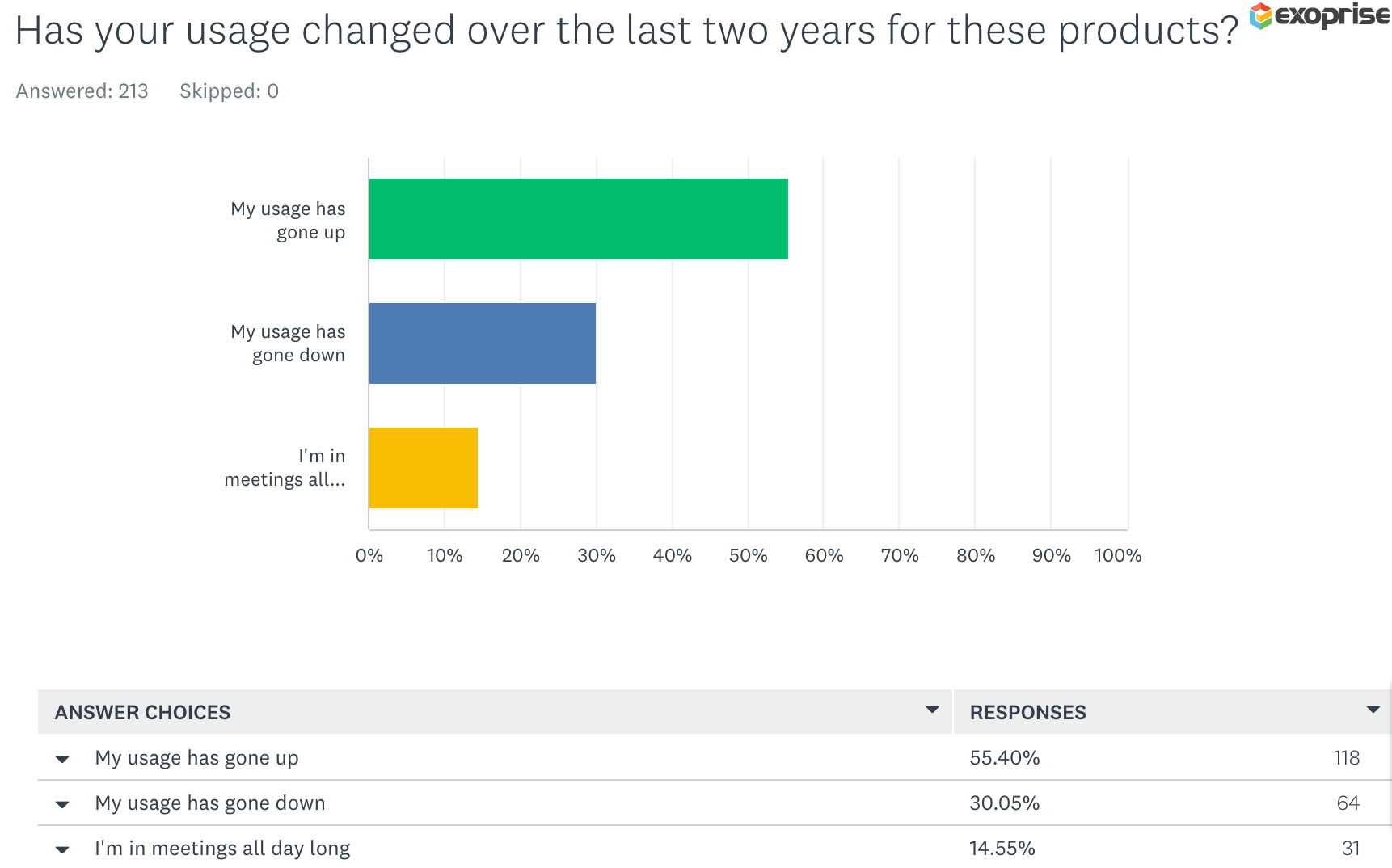
Analysis: Changing usage patterns, especially increases due to remote work, suggest a growing reliance on digital tools. This trend could accelerate the development of more integrated and user-friendly platforms.
On average, how do you split your time between Google or Microsoft productivity products?
Understanding time allocation offers insights into user preferences and dependencies on specific ecosystems.

Analysis: Time split between Google and Microsoft products might signal the strengths and limitations of each platform. Future enhancements could be influenced by these insights, as platforms vie for greater user engagement.
Rank the platforms you predominantly use for business collaboration?
Ranking collaboration platforms helps understand market positions and preferences.
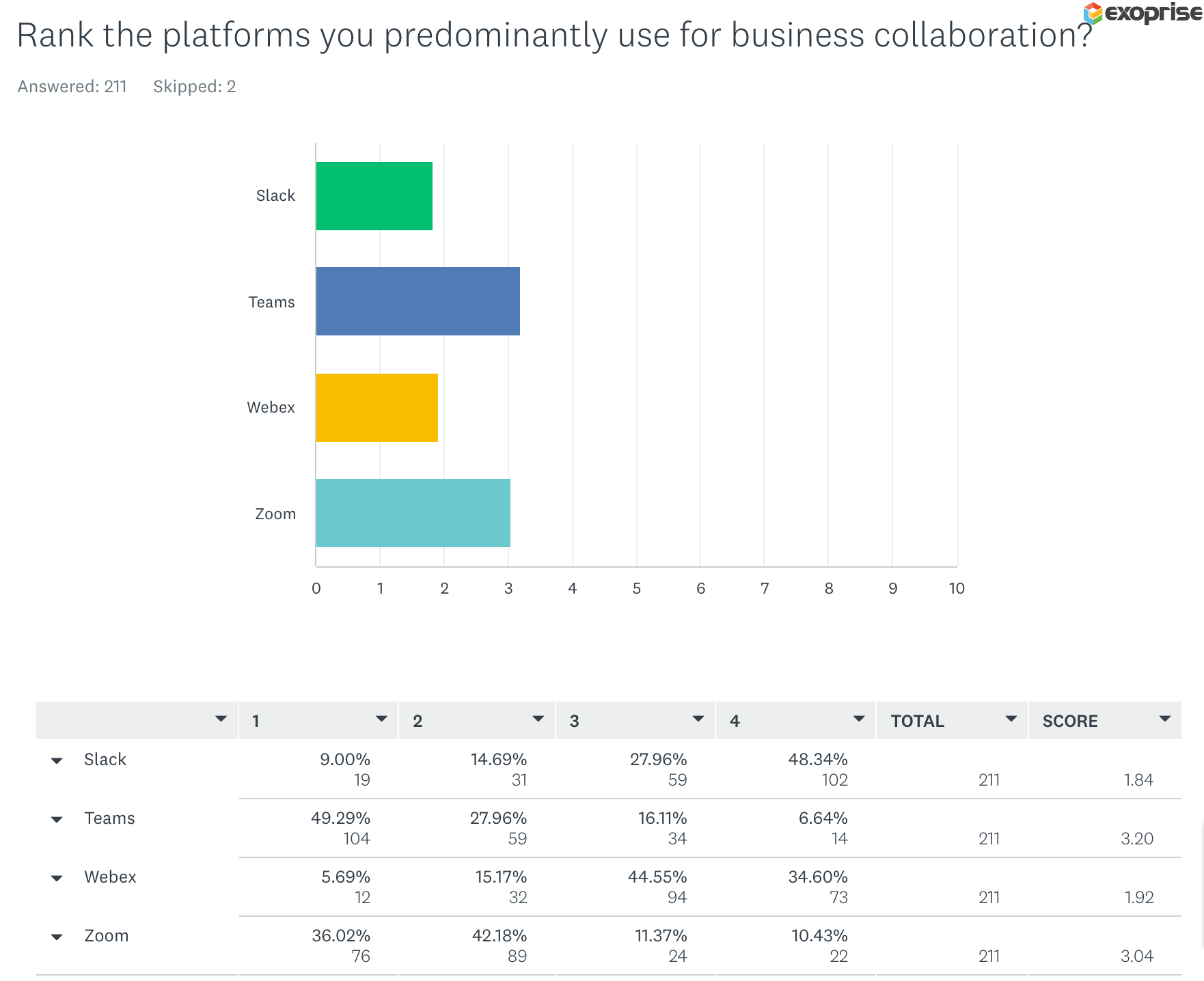
Analysis: The rankings might indicate emerging favorites and market dynamics. This could drive innovation and competition, enhancing the overall quality of collaboration tools.
Every day, are you forced to use different collaboration platforms because of the other party?
This question explores the fragmentation in collaboration tools and its impact on users.
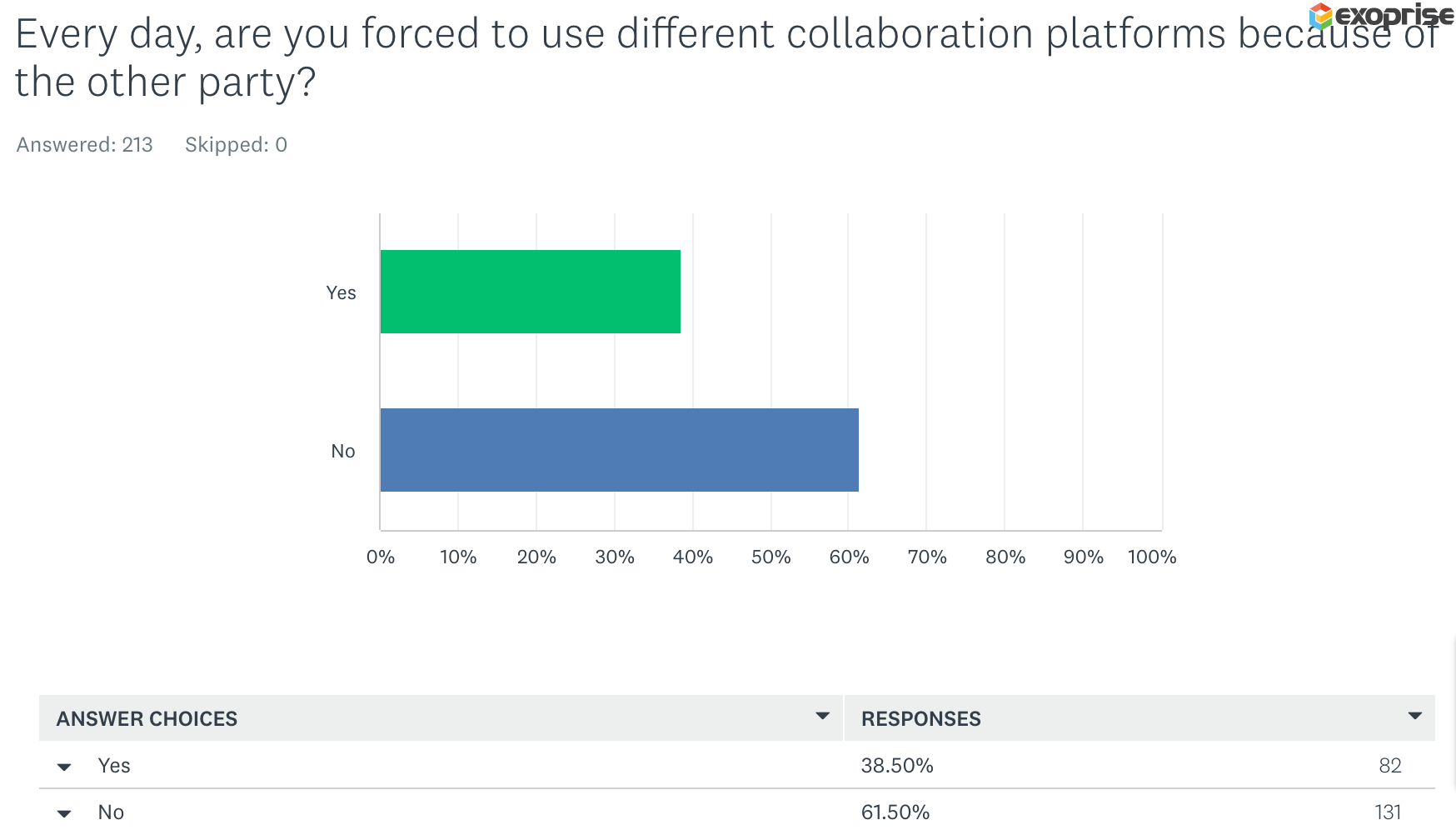
Analysis: A ‘Yes’ response from many participants could signal a fragmented collaboration tool landscape, possibly leading to increased efforts towards interoperability and unified platforms in the future.
Compared to two years ago, how would you rate your satisfaction with the above collaboration platforms?
Understanding satisfaction levels can indicate the success of platforms in adapting to changing needs.
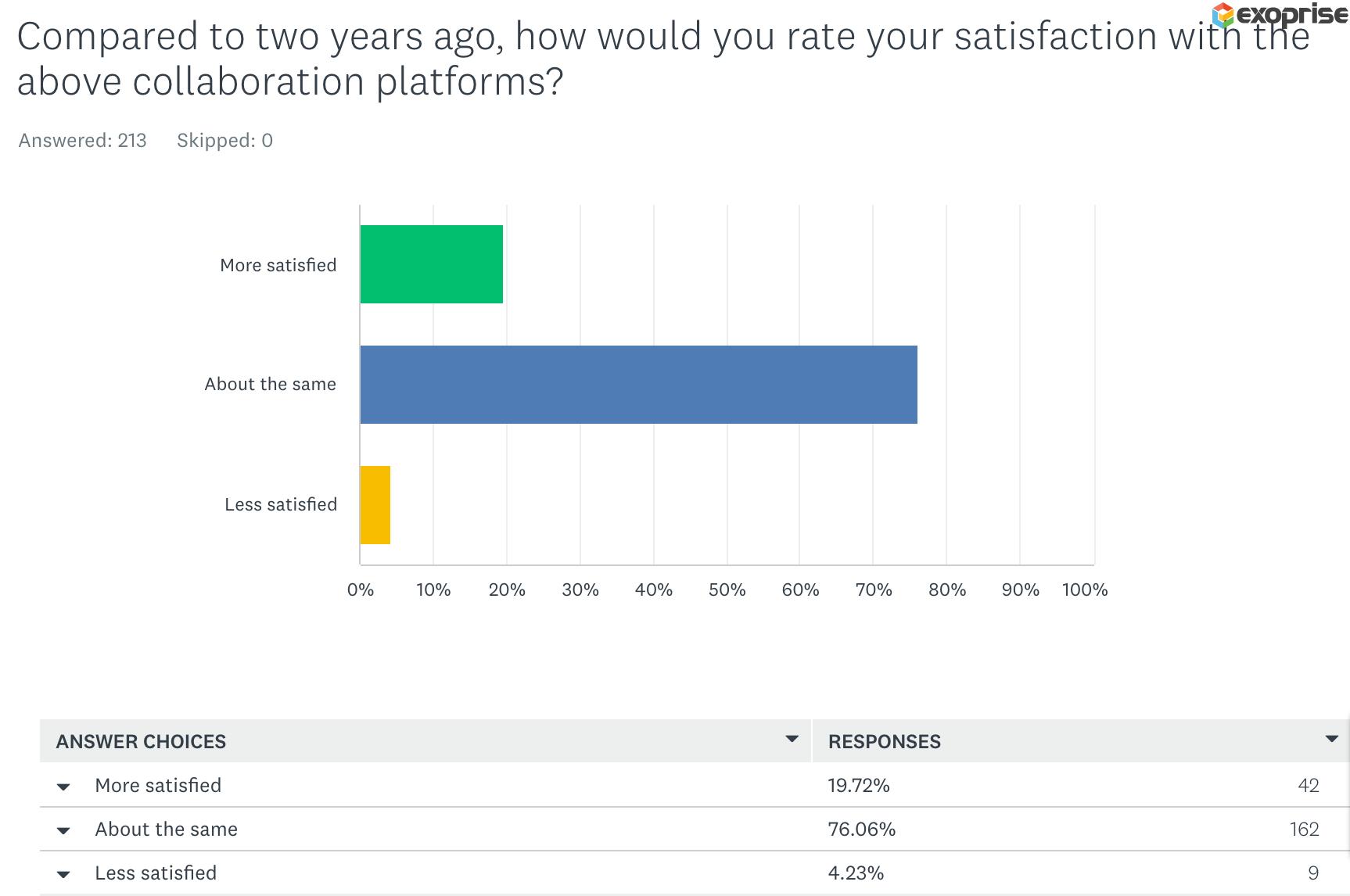
Analysis: Responses could guide future developments in collaboration tools, with platforms likely focusing more on areas that users find lacking.
How often does your ISP/cable face disruptions each month?
This question assesses the reliability of internet services, critical for remote work and online collaboration.
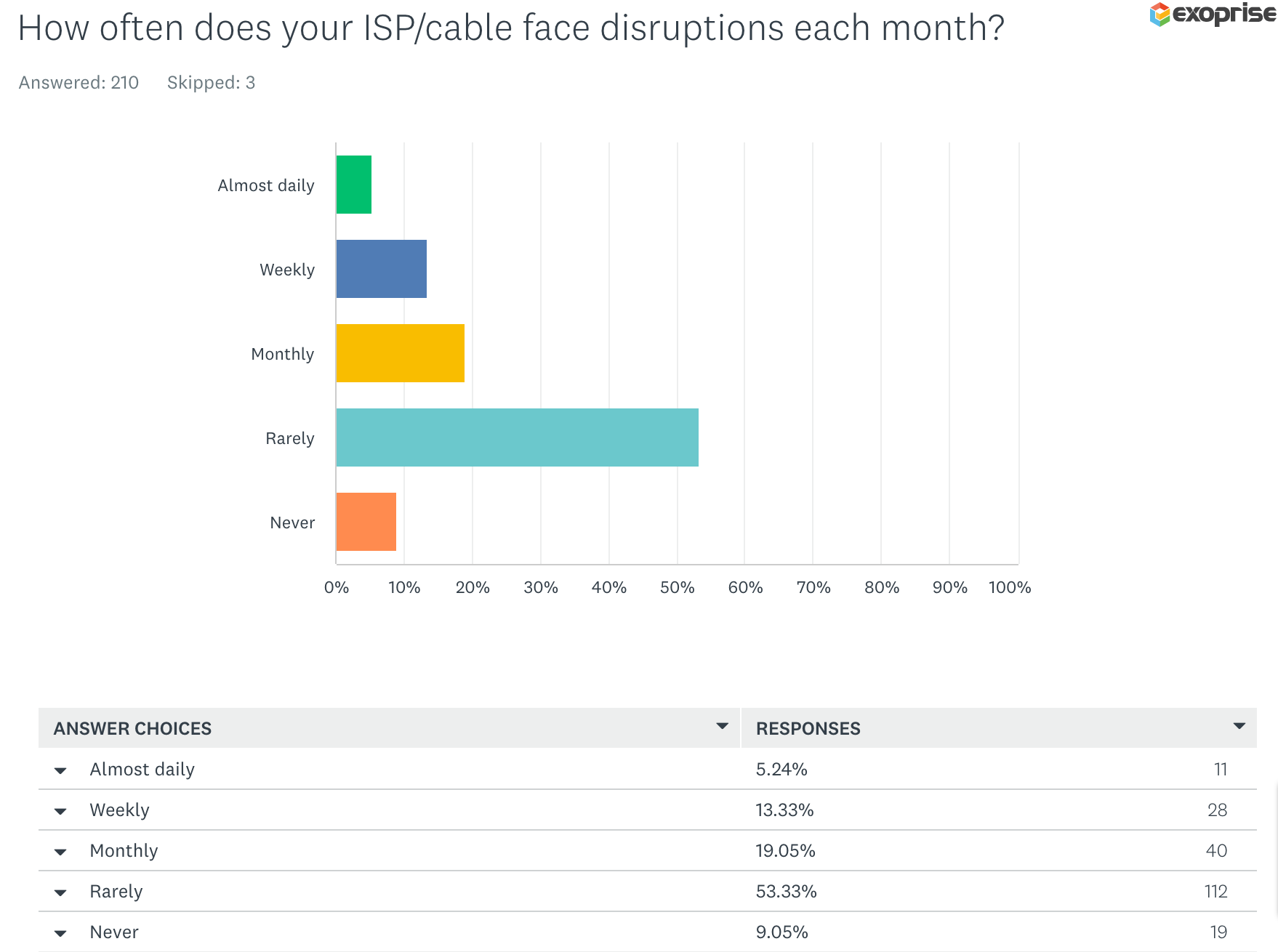
Analysis: Frequent disruptions reported could lead to a greater demand for reliable and resilient internet services, potentially influencing the strategies of ISPs and the growth of alternative internet providers.
On a scale of 1-10, how satisfied are you with your ISP’s performance for remote collaboration?
Satisfaction levels with ISPs are crucial in the era of remote work and digital collaboration.
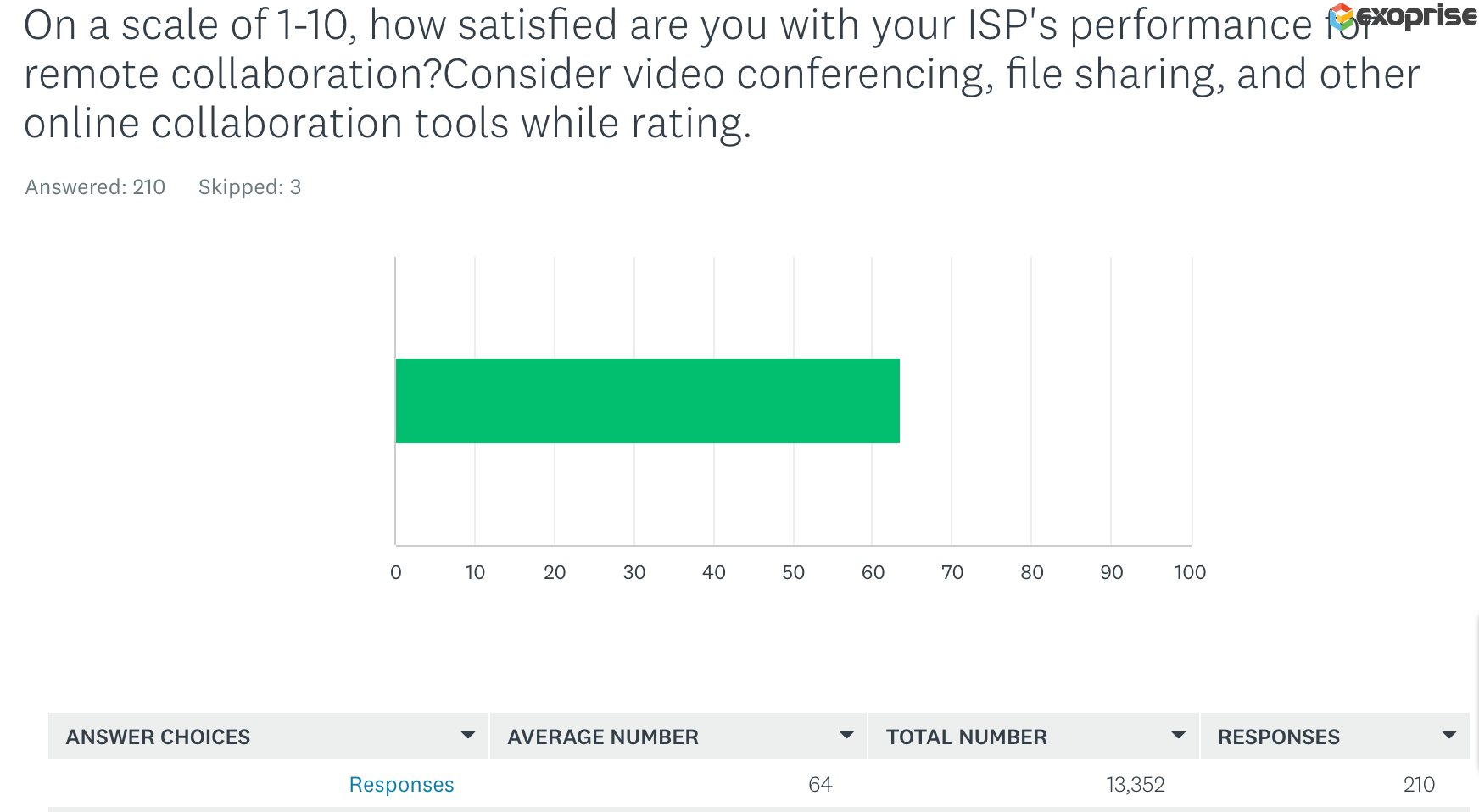
Analysis: Low satisfaction scores might prompt a shift towards ISPs offering higher quality services, possibly accelerating the adoption of new technologies like 5G for internet connectivity.
Have you considered switching to high-speed internet from a cellular company?
Exploring interest in cellular-based high-speed internet can indicate market trends in connectivity solutions.
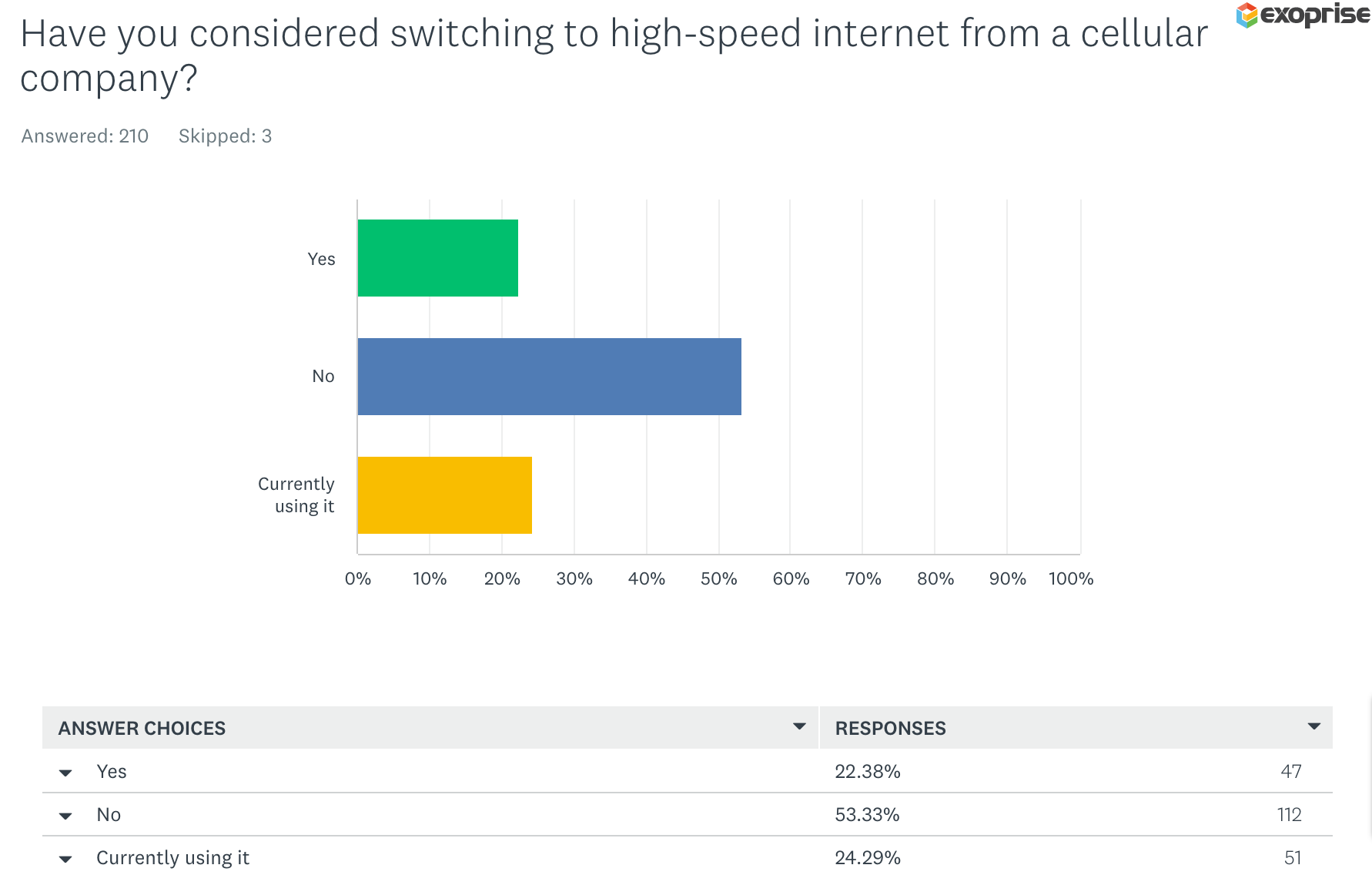
Analysis: A significant interest in switching could signal a potential shift in the internet services market, with cellular companies possibly gaining a larger share.
Which of the following platforms do you frequent for network checks?
Identifying preferred platforms for network checks can indicate trust and reliability perceptions.
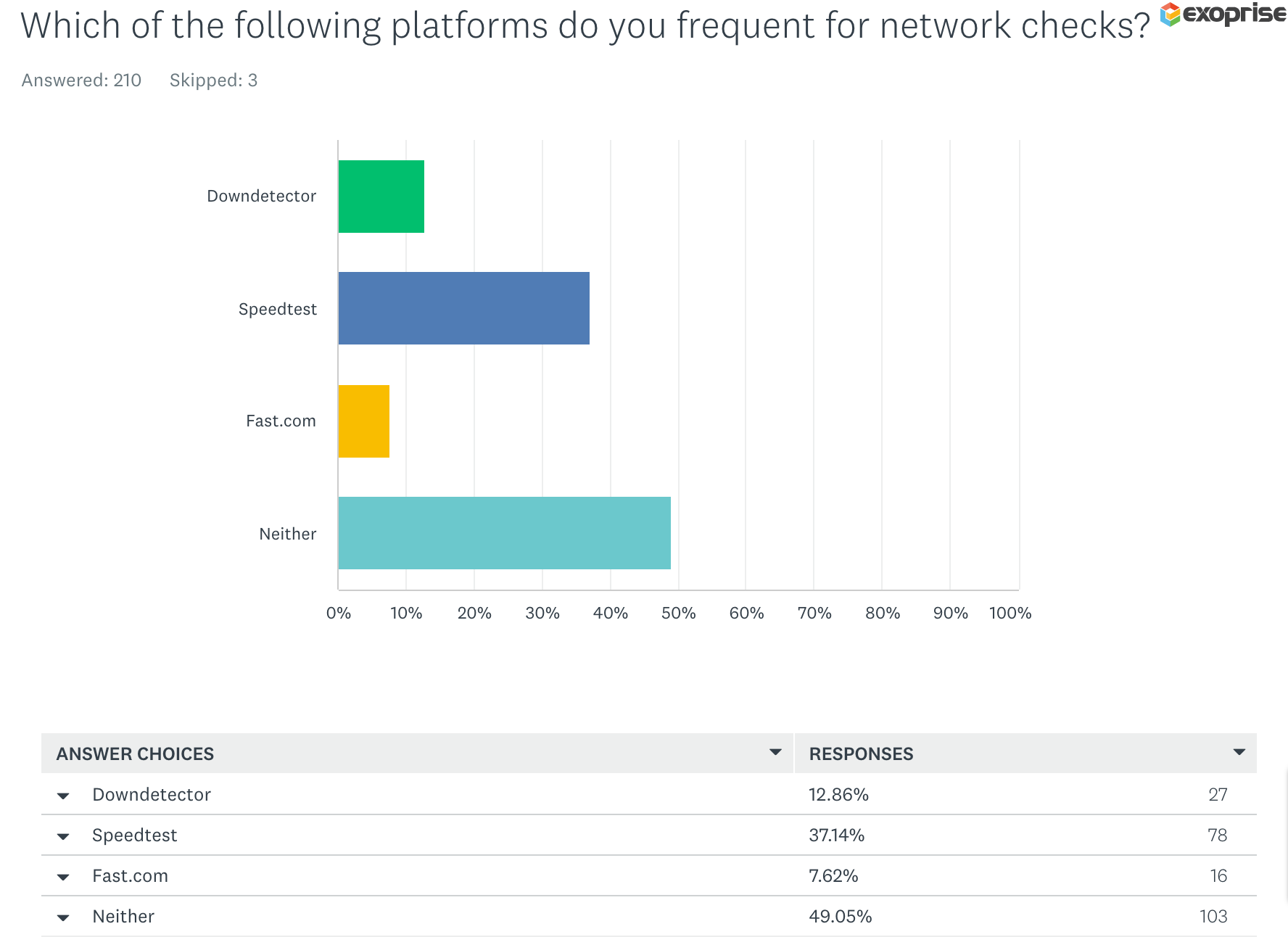
Analysis: Popular platforms might see increased usage, driving these providers to enhance their services further. Less popular platforms could innovate to increase their market share.
How would you describe your current work setup?
Hybrid work, remote work have been fluctuating for 2023. Understanding current work setups can reveal shifts in work culture and environment preferences.
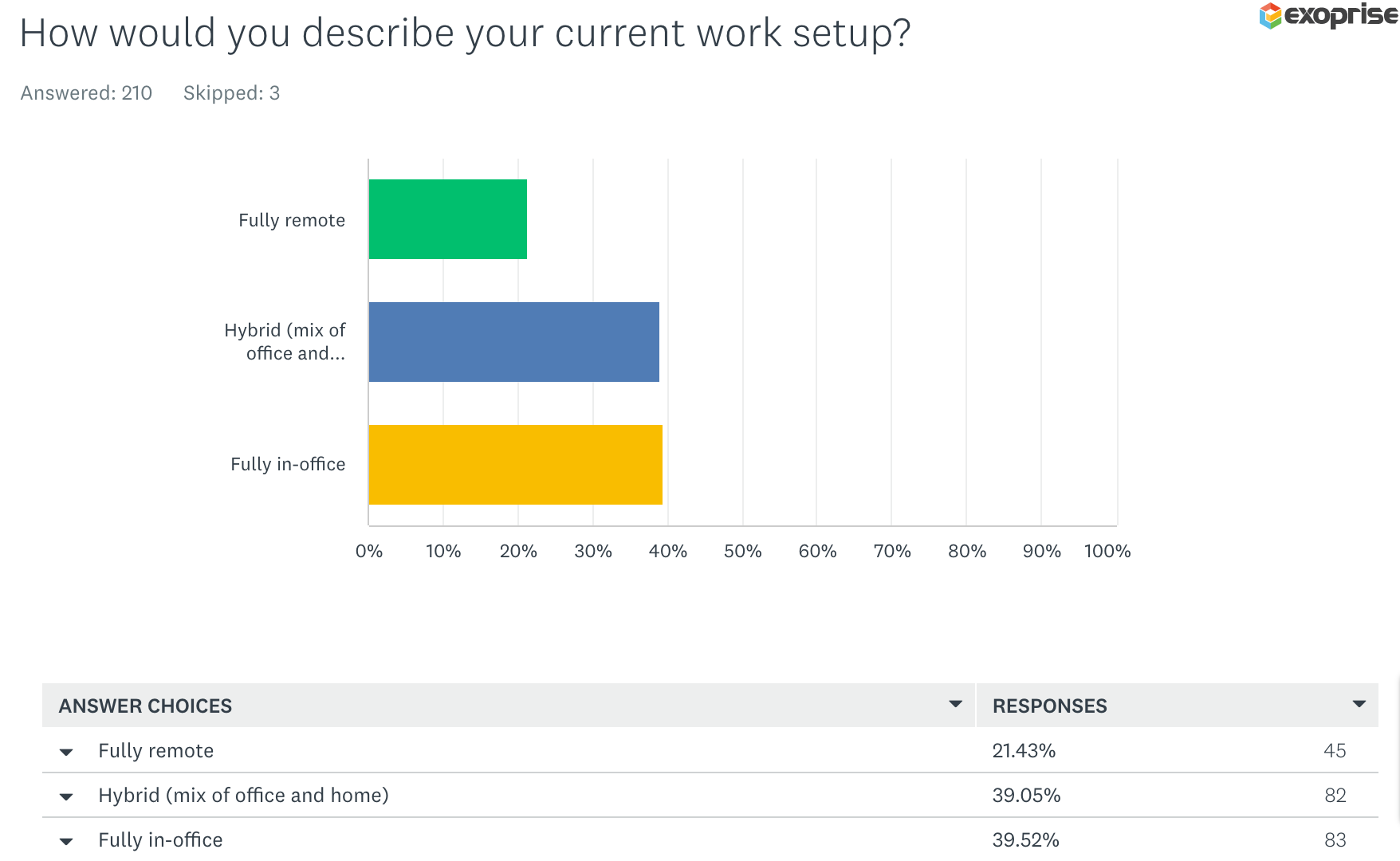
Analysis: The variety of work setups reported may indicate a trend towards more flexible work environments, potentially influencing how companies plan their IT infrastructure and policies.
How many members in your household work from home?
This question helps gauge the prevalence of remote work within households.
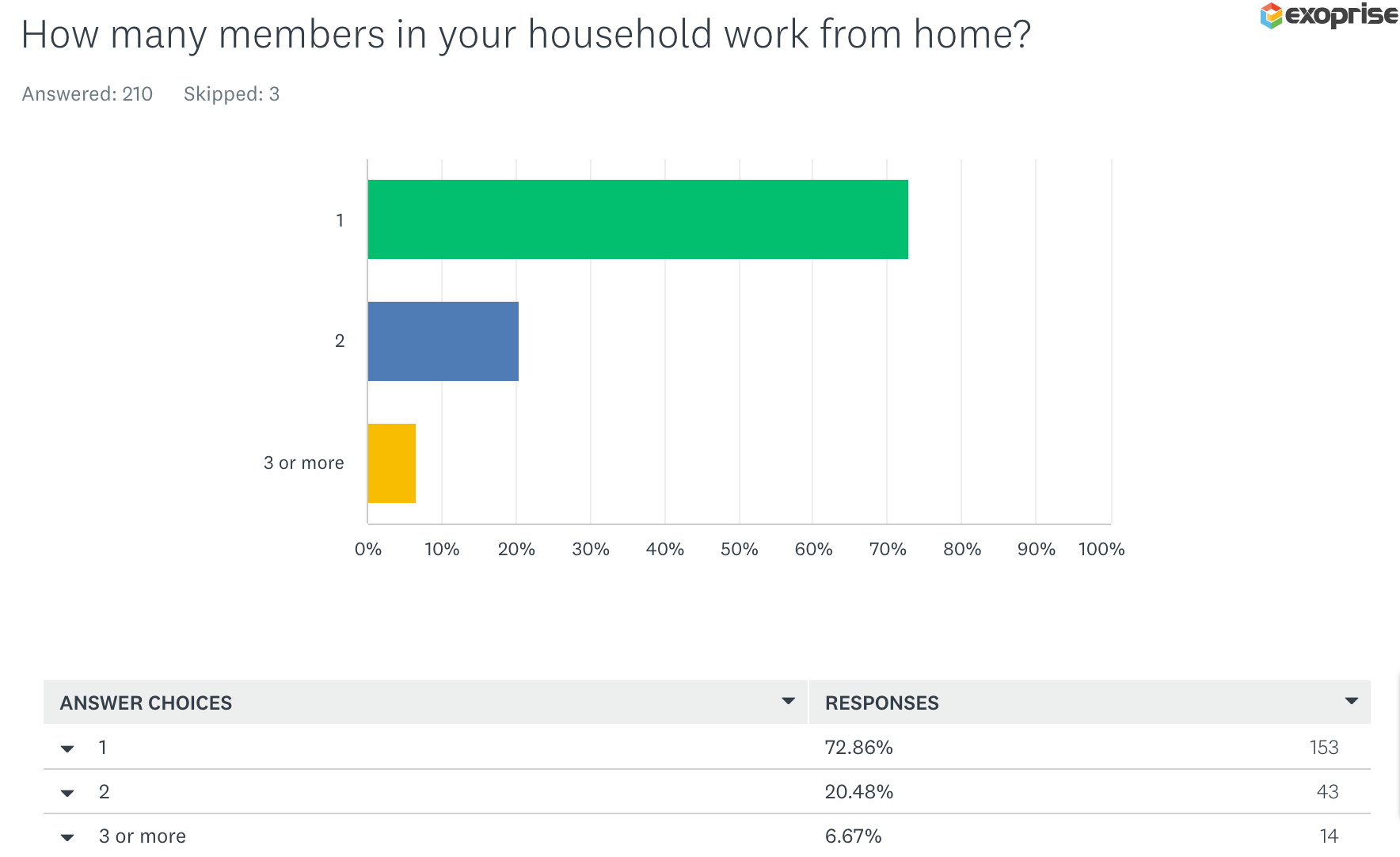
Analysis: A high number of home-working individuals could indicate a broader shift towards remote work, influencing residential internet demands and home office setups.
The Exoprise Digital Workplace Insight 2023 survey offers a comprehensive view into the evolving IT landscape, highlighting key trends and potential future directions. The analysis of these first 19 questions reveals significant insights into user preferences, market dynamics, and emerging needs within the IT sector. These insights are crucial for IT leaders and professionals in strategizing and adapting to the fast-paced changes in technology and work environments.
The Future of Work and Collaboration
As we conclude our in-depth analysis of the first half of survey results from the Exoprise Digital Workplace Insight 2023 survey, it’s clear that the IT landscape is undergoing significant transformation.
The responses from IT professionals have provided us with valuable insights into current trends, challenges, and the evolving dynamics of the IT sector. From the growing concerns over the cost-effectiveness of major software suites to the increasing reliance on digital tools and remote work setups, the survey paints a comprehensive picture of the current state of IT.
One of the key takeaways from this analysis is the adaptability and resilience of IT professionals in the face of rapid technological changes and economic uncertainties. The responses highlight a sector that is managing the challenges of today and actively preparing for the future. This proactive approach is evident in the shifting preferences for collaboration tools, the increasing focus on cybersecurity, and the exploration of alternative connectivity solutions like high-speed internet from cellular companies.
Another significant aspect that emerges is the growing importance of user experience and satisfaction in determining the success of IT products and services. The varied responses regarding platform preferences and the effectiveness of current cybersecurity measures reflect a market that values innovation, reliability, and user-friendliness. These insights are crucial for IT leaders and businesses as they strategize to meet the evolving needs of their users and stay competitive in a rapidly changing environment.
As we look to the future, these insights lay the groundwork for anticipating and navigating the upcoming trends in the IT industry. They offer a roadmap for IT professionals and businesses to adapt, innovate, and thrive in an increasingly digital world.
The Next Blog Post
In our next blog post, we will delve into the remaining questions, continuing our exploration of the IT landscape. This upcoming analysis will further deepen our understanding of the industry, uncovering more insights into how IT professionals are navigating the complexities of their field.
We will explore topics such as the impact of emerging technologies, the shifting paradigms of IT support and infrastructure, and the evolving nature of cybersecurity threats. We aim to provide a holistic view of the IT sector, offering valuable insights that can help IT professionals and businesses make informed decisions and stay ahead in a rapidly evolving digital world.
Stay tuned for our next blog post, where we will continue to unravel the nuances of the IT industry, offering more analysis, insights, and predictions for the future. Join us as we continue to navigate the fascinating world of IT, uncovering the trends that will shape the industry in the years to come.


